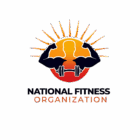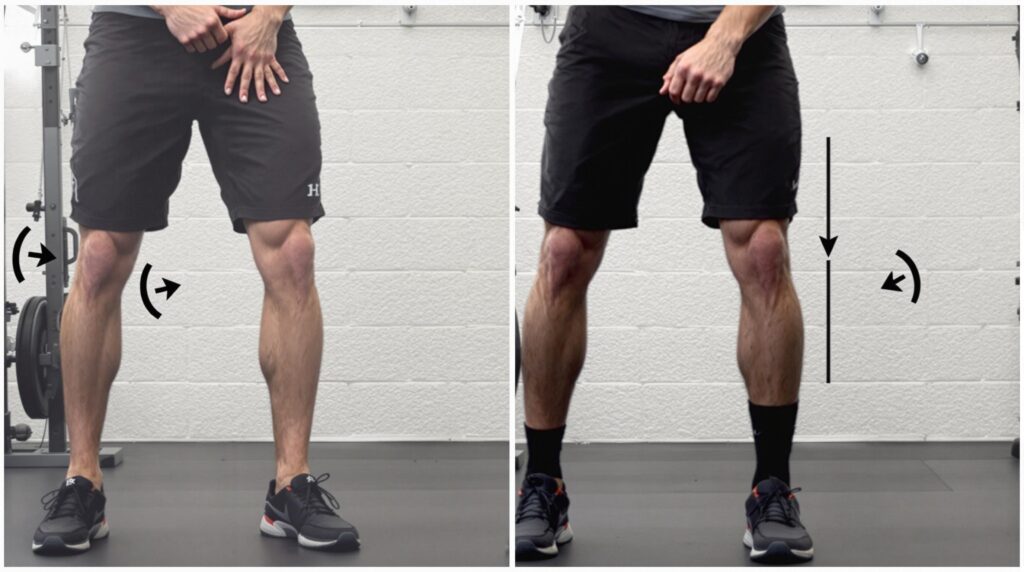Leg workouts are the backbone of a comprehensive fitness regimen, delivering benefits that extend far beyond just aesthetic improvements. The best workouts for legs incorporate a mix of compound and isolation exercises that target all major muscle groups in the lower body, enabling you to build strength, power, and muscular definition simultaneously.
Key Takeaways
- Compound movements like squats and deadlifts deliver the greatest hormonal response for overall growth
- Training legs 2-3 times weekly with 48-hour recovery periods optimizes muscle development
- Unilateral exercises such as Bulgarian split squats help correct strength imbalances within just 8 weeks
- Varying foot positions during calf exercises can increase muscle activation by up to 25%
- Progressive overload through periodized training is essential for continued leg development
Why Leg Training is Crucial for Your Overall Fitness
Leg workouts form the foundation for athletic performance and functional mobility. When you train your legs properly, you’re not just building aesthetic muscle—you’re creating a base of strength that improves your entire body’s capabilities. The large muscle groups in your legs, when properly stimulated, trigger a significant hormonal response that benefits muscle growth throughout your entire body.
Strong legs also reduce your risk of injury during both athletic activities and daily life. The stability and power generated from well-developed leg muscles translate to better performance in virtually every physical activity, from climbing stairs to playing sports. Since your legs contain some of the largest muscles in your body, training them effectively also burns more calories than working smaller muscle groups, making leg day a must for anyone focused on body composition goals.

The Science-Backed Benefits of Compound Leg Exercises
Compound leg exercises deliver superior muscle activation compared to isolation movements. Research demonstrates that back squats activate the quadriceps at 65-85% of maximum voluntary contraction (MVC) and glutes at 70-80% MVC. This high level of muscle recruitment explains why these movements are so effective for building both strength and size.
According to comparative research, back squats produce 23% greater glute activation than leg presses when performed to full depth. Meanwhile, front squats show 15% greater rectus femoris (front quad) activation versus back squats, while reducing spinal load by 25%. This makes front squats ideal for athletes looking to build quad strength with lower back stress.
A 2024 meta-analysis confirmed that incorporating back squats into training programs increases vertical jump height by 8-12%, while a 2022 study found that front squats improved 40m sprint times by 4% in rugby players. These performance benefits highlight why compound movements should anchor your leg training routine.
Master the Squat Variations: Back, Front, and Bulgarian Split Squats
The back squat serves as a foundational leg exercise that should be programmed for 3-5 sets of 4-8 reps at 75-85% of your one-rep max when training for strength. This exercise not only builds impressive leg mass but also indicates potential performance in other lifts—your 6RM squat load can predict deadlift performance.
Front squats shift the focus more toward your quadriceps while reducing stress on your lower back. The forward bar position forces a more upright torso, making it excellent for athletes who need to enhance clean pull mechanics while minimizing anterior knee shear forces.
Bulgarian split squats introduce unilateral training benefits that bilateral exercises can’t match. These show 50% greater gluteus medius recruitment compared to standard squats and can correct strength imbalances (less than 5% asymmetry) within just 8 weeks. For hypertrophy, try 4 sets of 8-12 reps with a 2-second pause at the bottom of each rep. A 2025 trial demonstrated that Bulgarian split squats increase single-leg hop distance by 18% in basketball players, highlighting their functional carryover.
Posterior Chain Development: Romanian Deadlifts and Nordic Curls
The Romanian deadlift (RDL) shows 40% greater semitendinosus activation compared to conventional deadlifts, making it superior for targeting the hamstrings. This hip-hinge movement improves sprint acceleration by 6% when performed with a 3-second eccentric phase, which enhances the stretch reflex in your posterior chain.
For proper RDL programming, start with 60% of your conventional deadlift 1RM and perform 3-4 sets of 8-10 reps. Focus on feeling the stretch in your hamstrings while maintaining a neutral spine throughout the movement.
Nordic hamstring curls deliver remarkable injury prevention benefits, providing 2.5 times greater hamstring fiber recruitment versus leg curls. Research shows they reduce ACL rupture risk by 51% in collegiate athletes. Teams implementing Nordic curls saw 67% fewer hamstring injuries over two competitive seasons. If you’re new to this challenging exercise, begin with band-assisted variations before progressing to bodyweight.
Machine-Based Leg Builders: Leg Press and Hack Squat
The leg press offers a safe environment to overload your quadriceps, with vastus lateralis activation reaching 95% MVC at 90° knee flexion. This makes it an excellent option for those looking to build leg size with reduced technical demands. There’s also good strength carryover, with a 1RM leg press typically equaling about 2.1 times your back squat 1RM in trained lifters.
One major benefit of the leg press is that it allows heavy loading with approximately 50% reduced lumbar compression compared to free weights. This makes it suitable for individuals with lower back issues who still want to train their legs intensely.
The hack squat shows 30% lower erector spinae activation versus free-weight squats while effectively targeting the quadriceps (85% MVC), glutes (45% MVC), and calves (25% MVC). To maximize hypertrophy on hack squats, use 4-second eccentric phases to increase time under tension. This controlled lowering stimulates more mechanical tension in the target muscles.
Functional Lower Body Training: Walking Lunges and Step-Ups
Walking lunges deliver impressive functional benefits, improving stair climbing power by 12% and lateral agility by 9%. They’re also metabolically demanding, burning approximately 12-15 calories per minute due to the continuous tension they place on your leg muscles.
To maximize glute engagement during lunges, incorporate a 25° forward torso lean, which research shows increases glute activation by 22%. Progress from bodyweight to dumbbells and finally to a barbell as your strength improves.
Step-ups are another functional movement with significant carryover to athletic performance. The height of the step matters—20-inch boxes increase glute activation by 18% compared to 12-inch boxes. Step-ups are so effective at building single-leg power that they predict 92% of sprint speed variance in track athletes.
A 2024 biomechanical analysis revealed that step-ups replicate 89% of running stride mechanics, making them an excellent exercise for runners and team sport athletes alike. For optimal strength development, use 50–60% of your back squat 1RM for 3 sets of 6–8 reps per leg.
Isolation Exercises for Complete Leg Development
Calf raises are essential for complete lower body development, but foot position significantly impacts results. Performing calf raises with toes pointed outward increases medial gastrocnemius activation by 25%, allowing for more targeted development. For optimal hypertrophy, implement 6-second tempo raises, which induce three times greater muscle damage than standard repetitions.
Advanced lifters can handle impressive loads on calf raises—up to 2.5 times bodyweight for 15-20 reps. This high-rep approach works well for calves due to their high proportion of slow-twitch muscle fibers.
Glute bridges provide exceptional isolation of the gluteus maximus, with peak activation reaching 88% MVC versus 72% in squats. This makes them particularly valuable for those looking to improve hip function and aesthetic development. Regular glute bridge work reduces anterior pelvic tilt by 14° in sedentary populations, potentially alleviating lower back discomfort.
For athletes, glute bridges offer functional benefits too, improving hip extension power by 19% in sprinters. To increase the challenge, add resistance bands just above the knees to increase abductor engagement while performing the exercise.
Effective Programming for Leg Development
For hypertrophy-focused leg training, structure workouts with 4-6 exercises per session, using 6-12 reps per set with 60-90 seconds of rest. When training primarily for strength, reduce to 3-5 exercises per session, lower the rep range to 1-6 reps per set, and extend rest periods to 3-5 minutes between sets.
Training frequency is crucial—aim to hit legs 2-3 times weekly with at least 48 hours between sessions for adequate recovery. This frequency optimizes protein synthesis while allowing sufficient recuperation.
An effective 12-week periodization plan might look like this:
- Weeks 1-4: Volume accumulation phase (8-12 reps per set)
- Weeks 5-8: Intensity ramp phase (4-6 reps per set)
- Weeks 9-12: Deload phase (50% reduction in volume)
For conditioning work that complements strength training, try sled push/pull training. Use approximately 75% of your bodyweight for 8 runs of 20 meters with 60 seconds rest. This type of training has been shown to improve repeat sprint ability by 11% in MMA fighters and can be integrated into home workouts with minimal equipment.
Sources
bosshunting.com.au/lifestyle/fitness/leg-workout
muscleandstrength.com/articles/maximize-gym-time-most-productive-muscle-building-exercises



